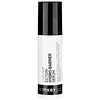What's inside
What's inside
 Key Ingredients
Key Ingredients

 Benefits
Benefits

 Concerns
Concerns

 Ingredients Side-by-side
Ingredients Side-by-side

Water
Skin ConditioningPropanediol
SolventCaprylic/Capric Triglyceride
MaskingCoconut Alkanes
EmollientEctoin 2%
Skin ConditioningHydrolyzed Sodium Hyaluronate
Skin ConditioningSodium Hyaluronate
HumectantMaltodextrin
AbsorbentPhenoxyethanol
PreservativeSodium Stearoyl Glutamate
CleansingPanthenol
Skin ConditioningCetearyl Alcohol
EmollientSclerotium Gum
Emulsion StabilisingXanthan Gum
EmulsifyingGlyceryl Stearate
EmollientJojoba Esters
EmollientCoco-Caprylate/Caprate
EmollientEthylhexylglycerin
Skin ConditioningSodium Citrate
BufferingHelianthus Annuus Seed Wax
Skin ConditioningCitric Acid
BufferingPolyglyceryl-10 Stearate
Skin ConditioningAvena Sativa Kernel Extract
AbrasiveGlycerin
HumectantLeuconostoc/Radish Root Ferment Filtrate
AntimicrobialTriethyl Citrate
MaskingPentylene Glycol
Skin ConditioningPolyglyceryl-6 Behenate
Emulsion StabilisingSodium Hyaluronate Crosspolymer
HumectantCeramide NP
Skin ConditioningHyaluronic Acid
HumectantCeramide AP
Skin ConditioningCholesterol
EmollientPhytosphingosine
Skin ConditioningBehenic Acid
CleansingSodium Levulinate
Skin ConditioningPolyglycerin-3
HumectantPotassium Sorbate
PreservativeSodium Cetearyl Sulfate
CleansingCeramide EOP
Skin ConditioningWater, Propanediol, Caprylic/Capric Triglyceride, Coconut Alkanes, Ectoin 2%, Hydrolyzed Sodium Hyaluronate, Sodium Hyaluronate, Maltodextrin, Phenoxyethanol, Sodium Stearoyl Glutamate, Panthenol, Cetearyl Alcohol, Sclerotium Gum, Xanthan Gum, Glyceryl Stearate, Jojoba Esters, Coco-Caprylate/Caprate, Ethylhexylglycerin, Sodium Citrate, Helianthus Annuus Seed Wax, Citric Acid, Polyglyceryl-10 Stearate, Avena Sativa Kernel Extract, Glycerin, Leuconostoc/Radish Root Ferment Filtrate, Triethyl Citrate, Pentylene Glycol, Polyglyceryl-6 Behenate, Sodium Hyaluronate Crosspolymer, Ceramide NP, Hyaluronic Acid, Ceramide AP, Cholesterol, Phytosphingosine, Behenic Acid, Sodium Levulinate, Polyglycerin-3, Potassium Sorbate, Sodium Cetearyl Sulfate, Ceramide EOP
Water
Skin ConditioningCetearyl Ethylhexanoate
EmollientGlycerin
HumectantCetearyl Alcohol
EmollientPrunus Amygdalus Dulcis Oil
Skin ConditioningCaprylic/Capric Triglyceride
MaskingCyclopentasiloxane
EmollientPolyacrylate-13
Phenoxyethanol
PreservativeCetearyl Glucoside
EmulsifyingParfum
MaskingHelianthus Annuus Seed Oil
EmollientPolyisobutene
Camellia Sinensis Leaf Extract
AntimicrobialPropylene Glycol
HumectantRetinyl Palmitate
Skin ConditioningBenzoic Acid
MaskingDisodium EDTA
Polysorbate 20
EmulsifyingDehydroacetic Acid
PreservativeSorbitan Isostearate
EmulsifyingSodium Hyaluronate
HumectantPrunus Armeniaca Fruit Extract
Skin ConditioningLimonene
PerfumingSodium Hydroxide
BufferingHexyl Cinnamal
PerfumingLupinus Albus Seed Extract
Skin ConditioningTocopherol
AntioxidantAlpha-Isomethyl Ionone
PerfumingPotassium Sorbate
PreservativeSodium Benzoate
MaskingHydroxycitronellal
PerfumingWater, Cetearyl Ethylhexanoate, Glycerin, Cetearyl Alcohol, Prunus Amygdalus Dulcis Oil, Caprylic/Capric Triglyceride, Cyclopentasiloxane, Polyacrylate-13, Phenoxyethanol, Cetearyl Glucoside, Parfum, Helianthus Annuus Seed Oil, Polyisobutene, Camellia Sinensis Leaf Extract, Propylene Glycol, Retinyl Palmitate, Benzoic Acid, Disodium EDTA, Polysorbate 20, Dehydroacetic Acid, Sorbitan Isostearate, Sodium Hyaluronate, Prunus Armeniaca Fruit Extract, Limonene, Sodium Hydroxide, Hexyl Cinnamal, Lupinus Albus Seed Extract, Tocopherol, Alpha-Isomethyl Ionone, Potassium Sorbate, Sodium Benzoate, Hydroxycitronellal
 Reviews
Reviews

Ingredients Explained
These ingredients are found in both products.
Ingredients higher up in an ingredient list are typically present in a larger amount.
This ingredient is an emollient, solvent, and texture enhancer. It is considered a skin-softener by helping the skin prevent moisture loss.
It helps thicken a product's formula and makes it easier to spread by dissolving clumping compounds.
Caprylic Triglyceride is made by combining glycerin with coconut oil, forming a clear liquid.
While there is an assumption Caprylic Triglyceride can clog pores due to it being derived from coconut oil, there is no research supporting this.
Learn more about Caprylic/Capric TriglycerideCetearyl alcohol is a mixture of two fatty alcohols: cetyl alcohol and stearyl alcohol. It is mainly used as an emulsifier. Emulsifiers help prevent the separation of oils and products. Due to its composition, it can also be used to thicken a product or help create foam.
Cetearyl alcohol is an emollient. Emollients help soothe and hydrate the skin by trapping moisture.
Studies show Cetearyl alcohol is non-toxic and non-irritating. The FDA allows products labeled "alcohol-free" to have fatty alcohols.
This ingredient is usually derived from plant oils such as palm, vegetable, or coconut oils. There is debate on whether this ingredient will cause acne.
Due to the fatty acid base, this ingredient may not be Malassezia folliculitis safe.
Learn more about Cetearyl AlcoholGlycerin is already naturally found in your skin. It helps moisturize and protect your skin.
A study from 2016 found glycerin to be more effective as a humectant than AHAs and hyaluronic acid.
As a humectant, it helps the skin stay hydrated by pulling moisture to your skin. The low molecular weight of glycerin allows it to pull moisture into the deeper layers of your skin.
Hydrated skin improves your skin barrier; Your skin barrier helps protect against irritants and bacteria.
Glycerin has also been found to have antimicrobial and antiviral properties. Due to these properties, glycerin is often used in wound and burn treatments.
In cosmetics, glycerin is usually derived from plants such as soybean or palm. However, it can also be sourced from animals, such as tallow or animal fat.
This ingredient is organic, colorless, odorless, and non-toxic.
Glycerin is the name for this ingredient in American English. British English uses Glycerol/Glycerine.
Learn more about GlycerinPhenoxyethanol is a preservative that has germicide, antimicrobial, and aromatic properties. Studies show that phenoxyethanol can prevent microbial growth. By itself, it has a scent that is similar to that of a rose.
It's often used in formulations along with Caprylyl Glycol to preserve the shelf life of products.
Potassium Sorbate is a preservative used to prevent yeast and mold in products. It is commonly found in both cosmetic and food products.
This ingredient comes from potassium salt derived from sorbic acid. Sorbic acid is a natural antibiotic and effective against fungus.
Both potassium sorbate and sorbic acid can be found in baked goods, cheeses, dried meats, dried fruit, ice cream, pickles, wine, yogurt, and more.
You'll often find this ingredient used with other preservatives.
Learn more about Potassium SorbateSodium Hyaluronate is hyaluronic acid's salt form. It is commonly derived from the sodium salt of hyaluronic acid.
Like hyaluronic acid, it is great at holding water and acts as a humectant. This makes it a great skin hydrating ingredient.
Sodium Hyaluronate is naturally occurring in our bodies and is mostly found in eye fluid and joints.
These are some other common types of Hyaluronic Acid:
Learn more about Sodium HyaluronateWater. It's the most common cosmetic ingredient of all. You'll usually see it at the top of ingredient lists, meaning that it makes up the largest part of the product.
So why is it so popular? Water most often acts as a solvent - this means that it helps dissolve other ingredients into the formulation.
You'll also recognize water as that liquid we all need to stay alive. If you see this, drink a glass of water. Stay hydrated!
Learn more about Water